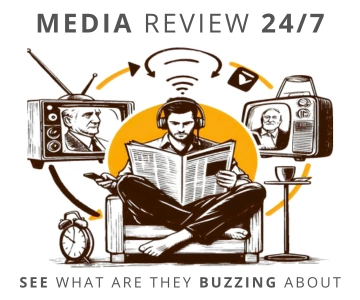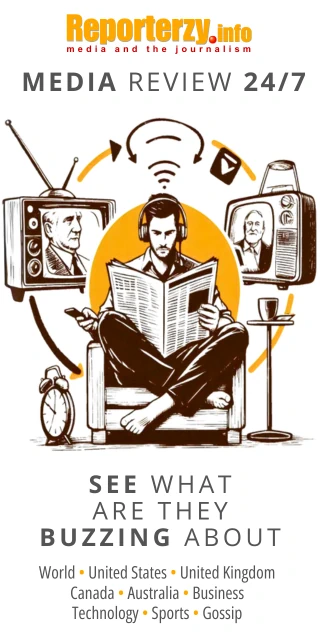 illustration: DALL-E
illustration: DALL-EThe face of fashion in Poland is changing - and it`s happening on screens, not just catwalks. According to the latest report by the Institute of Media Monitoring and Forbes Women, personal brands in fashion now gain value through visibility and influence rather than tradition.
In the “Top 100 Most Valuable Female Personal Brands in Poland 2025” report, media coverage was analyzed across TV, radio, print, web, and social platforms. Only neutral or positive mentions were included. The final ranking was based on Advertising Value Equivalent (AVE) - a method that estimates how much the coverage would cost if it were paid advertising.
| Name | Media Value (PLN million) | Media Reach (million) |
|---|---|---|
| Maffashion | 81.9 | 536.7 |
| Anja Rubik | 56.2 | 237.7 |
| Jessica Mercedes | 52.5 | 275.1 |
| Joanna Przetakiewicz | 50.4 | 211.1 |
| Magda Butrym | 40.7 | 70.4 |
| Gosia Baczyńska | 25.7 | 30.1 |
| Ewa Minge | 23.4 | 63.6 |
| Zofia Ślotała | 21.7 | 20.9 |
| Karolina Pisarek | 20.9 | 57.7 |
| Joanna Horodyńska | 18.1 | 30.2 |
Together, the top ten fashion personalities generated over 1.5 billion media contacts, translating into a staggering PLN 390 million in total media value - a figure that rivals full-year marketing budgets of global fashion brands.
Maffashion, Rubik and Mercedes
At the top of the list is Julia Kuczyńska, known online as Maffashion. Her personal brand reached a media value of PLN 81.9 million, with over 536 million media contacts - that’s about 17 appearances per person in the 15+ age group.
Maffashion started as a fashion blogger and evolved into a full-fledged media personality. In the past year, she starred in “Dancing with the Stars”, sat on beauty award juries, walked red carpets, and drove massive engagement on Instagram - over 3.5 million interactions, the highest across all ranked figures.
Second place goes to Anja Rubik, whose brand was valued at PLN 56.2 million, with a reach of 237.7 million. A globally renowned supermodel, Rubik now channels her influence into activism. Through her foundation Sexed.pl, she pushes for proper sex education in Poland and speaks at conferences like Impact’25. She also received the Freedom of Speech Medal from the Grand Press Foundation.
Jessica Mercedes, another early influencer, took third place with PLN 52.5 million AVE and 275 million in media reach. Known for launching Veclaim and Moiess, she blends business with personal branding. Last year, she appeared on “Asia Express”, attended fashion weeks in New York and Paris, and co-hosted a charity auction with Magda Gessler.
All you need is a strong message
Behind the top three, names like Joanna Przetakiewicz and Magda Butrym demonstrate that designer status still carries weight - but must be backed by media savvy. Meanwhile, long-established fashion figures like Ewa Minge, Gosia Baczyńska, and Joanna Horodyńska continue to command attention.
Before 2010, building a fashion brand required access to industry events and glossy magazines. Now, it starts on Instagram. You no longer need to be a top model or luxury designer to make it in fashion. All you need is a strong message, creativity, and a loyal online audience.
Influencer marketing seems to be the new infrastructure of fashion success. Authenticity, relatability, and consistent digital presence are the engines behind the most valuable names in the industry. You can find the full ranking of The 100 most valuable female personal brands in Poland ‘25 in the July issue of "Forbes Women" Poland.
COMMERCIAL BREAK
New articles in section Media industry
Advertising market 2025. Poland, Europe and the World
Marcin Grządka
The global advertising market is growing by 8.8% in 2025 and will reach a value of 1.14 trillion dollars. The industry result in Europe records slightly lower dynamics, at the level of 5.8%. In this comparison, Poland performs clearly above the average. We will record an increase of 8.9% this year and a value of 18.56 billion PLN - estimates WPP Media in the annual report "This Year Next Year".
The print media market 2025. Three global trends
Krzysztof Fiedorek
The market value is 359.53 billion dollars, yet the erosion is visible to the naked eye. The decline for newspapers will amount to -2.3 percent. Despite this, print retains strength: it generates 76 percent of subscription revenues and enjoys 82 percent consumer trust. The future of the industry is defined by hybrid strategies and niche specialization.
Journalism in the age of AI. Why people prefer humans over machines
Krzysztof Fiedorek
Only 12% of people accept news created solely by AI, while 62% prefer those written by humans. At the same time, only 19% notice labels indicating the use of artificial intelligence, while younger audiences ask AI to explain the content to them. These are the findings of the Reuters Institute report on artificial intelligence in media.
See articles on a similar topic:
Print Advertising in Poland. Analysis by Polskie Badania Czytelnictwa
BARD
Analysts at Polskie Badania Czytelnictwa (Polish Readership Surveys) have compiled statistical data highlighting the reach, engagement, and opinions regarding print advertising campaigns. These insights are valuable for marketers aiming to plan and optimize advertising budgets.
New Technologies in Journalism. PressInstitute Study
BARD
Nearly 39% of journalists use their smartphone or tablet camera to record videos, while over 26% use the built-in camera to take photos that they later publish, according to the "Journalists and New Technologies" study by PressInstitute.
Disinformation ranks above terrorism as global threat
KFi
According to "International Opinion on Global Threats" by Pew Research Center, a median of 72% of adults across 25 countries view the spread of false information online as a major threat to their country. That number places disinformation at the very top of perceived global dangers.
Fake News in Poland. Challenges in Assessing Information Credibility
RINF
One in four information consumers relies on sources where verifying credibility is a significant challenge. Fake news remains a major issue, as indicated by 77% of respondents, with 51% admitting they struggle to discern truth from falsehood, according to Deloitte's *Digital Consumer Trends 2021* report.






























